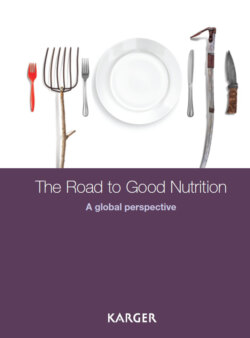Читать книгу The Road to Good Nutrition - Группа авторов - Страница 109
На сайте Литреса книга снята с продажи.
Case study Household Rice Expenditure and Maternal and Child Nutritional Status in Bangladesh
ОглавлениеIncreases in global food prices have raised concerns that the prevalence of malnutrition may increase, especially in developing countries. Rising food prices may decrease the ability of households to purchase food. Because poor households use a relatively large proportion of income to purchase food, increases in the price of food can directly affect the amount and type of food their income can buy, which can be reflected by decreased amounts of fat and vegetables in meals, elimination of some meals, and an overall reduction in dietary diversity. Because dietary diversity and animal-source foods are recognized as key components of high-quality diets, rising food prices can lead to a reduction in the quality of the diet. Reduced quality of the diet may adversely affect both nutrition and health over time. Previous studies have shown that increases in food prices lead to greater levels of stunting among children, decreased maternal micronutrient status, and impaired growth of infants.
In Bangladesh, poor rural families often deal with high food costs by purchasing primarily rice. The objective of [the current] study was to characterize the relationship between household expenditure on rice and non-rice foods with maternal and child malnutrition.
A recent study of data collected in the Nutritional Surveillance Project (NSP) in Bangladesh between 1992 and 2000 evaluated how changes in rice price affected child underweight. The percentage of underweight children declined in the situation where rice expenditures fell and households were able to spend more on non-rice foods. We sought to expand these investigations to evaluate the relationship between rice expenditure, non-rice expenditure, and household food expenditure and child stunting and maternal underweight between 2000 and 2005.
The results of [our] study show that households with higher expenditure on rice have increased odds of child stunting. Conversely, households with a higher expenditure on non-rice foods have decreased odds of child stunting. A similar relationship was observed between rice and non-rice food expenditures and maternal underweight. Previous studies have shown that changes in weekly expenditure on rice reflect changes in rice prices … Previous studies have shown that the percentage of child underweight increases as rice expenditures rise. The present study extends these findings and suggests that higher expenditure on rice (reflecting higher food prices) increases the likelihood of developing child stunting.
Households with highest expenditures on rice and lower expenditures on non-rice foods have greater child malnutrition across all age categories up to 59 mo and greater maternal underweight. In a situation of global food prices, these findings suggest that there will be considerable impact upon the prevalence of child malnutrition and maternal underweight in developing countries.
Source: First published November 25, 2009, doi: 10.3945/jn.109.110718 J. Nutr. January 2010 vol. 140 no. 1 189S-194S [adapted and abridged]
